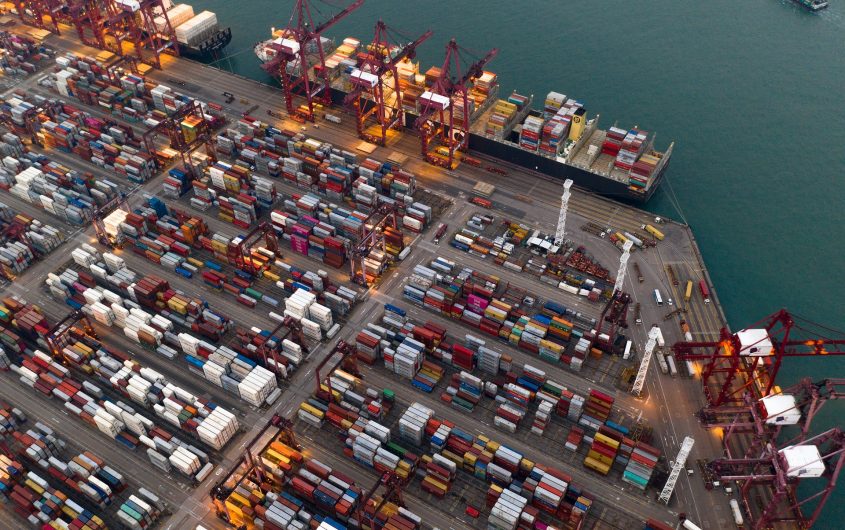
Will He, Or Won’t He?

Peter S. Rashish
Vice President; Director, Geoeconomics Program
Peter S. Rashish, who counts over 30 years of experience counseling corporations, think tanks, foundations, and international organizations on transatlantic trade and economic strategy, is Vice President and Director of the Geoeconomics Program at AICGS. He also writes The Wider Atlantic blog.
Mr. Rashish has served as Vice President for Europe and Eurasia at the U.S. Chamber of Commerce, where he spearheaded the Chamber’s advocacy ahead of the launch of the Transatlantic Trade and Investment Partnership. Previously, Mr. Rashish was a Senior Advisor for Europe at McLarty Associates, Executive Vice President of the European Institute, and a staff member and consultant at the International Energy Agency, the World Bank, UN Trade and Development, the Atlantic Council, the Bertelsmann Foundation, and the German Marshall Fund.
Mr. Rashish has testified before the House Financial Services Subcommittee on International Monetary Policy and Trade and the House Foreign Affairs Subcommittee on Europe and Eurasia and has advised three U.S. presidential campaigns. He has been a featured speaker at the Munich Security Conference, the Aspen Ideas Festival, and the European Forum Alpbach and is a member of the Board of Directors of the Jean Monnet Institute in Paris and a Senior Advisor to the European Policy Centre in Brussels. His commentaries have been published in The New York Times, the Financial Times, The Wall Street Journal, Foreign Policy, and The National Interest, and he has appeared on PBS, CNBC, CNN, NPR, and the BBC.
He earned a BA from Harvard College and an MPhil in international relations from Oxford University. He speaks French, German, Italian, and Spanish.
The biggest guessing game right now in transatlantic relations is whether President Trump will impose 25 percent tariffs on cars and car parts by November 13. That’s the deadline set out by a February 2019 Department of Commerce report finding that automobile imports are a threat to U.S. national security under Section 232 of a 1962 U.S. trade law.
Since May, Robert Lighthizer, the U.S. trade representative, has been tasked with negotiating a solution with auto exporting countries before this week’s deadline. Exports from most large producers—Japan, Korea, Canada, and Mexico—are already protected to various degrees under recently negotiated or renegotiated trade deals like the U.S.-Mexico-Canada Agreement. The odd man out is the European Union, where Germany is the largest car manufacturer. While talks aimed at a broader U.S.-EU trade agreement have been underway since July 2018, they have not made much progress, so car imports from Europe remain vulnerable to the tariffs.
It may be hard to imagine how a BMW or a Honda could threaten U.S. national security. A White House statement about the Commerce department report provides some help. It asserts that “the rapid application of commercial breakthroughs in automobile technology is necessary for the United States to retain competitive military advantage and meet new defense requirements.” The link between R&D in cars and U.S. national security needs is made explicit. But it is the implicit message that is perhaps even more striking: that it would be dangerous for the U.S. to rely on automobile technologies imported from allied countries like Germany or Japan to fulfill this innovation requirement.
But it is the implicit message that is perhaps even more striking: that it would be dangerous for the U.S. to rely on automobile technologies imported from allied countries like Germany or Japan to fulfill this innovation requirement.
But why cars? Certainly, there are other R&D intensive industries where the link to defense is more direct, such as aviation. But unlike cars, the U.S. aerospace industry generates a trade surplus for the country. Given the president’s view that the U.S. trade balance is a scorecard for who’s “winning” at trade, the national security justification may be nothing more than a way to dress up garden-variety protectionism in sophisticated clothing.
Whatever the merits of the idea, the decision looms. So will he, or won’t he?
The president may see imposing car tariffs as a way to increase U.S. leverage over European countries, whether within the ongoing trade negotiations (which focus on removing industrial tariffs and aligning regulatory approaches) or to get them to increase their NATO spending.
Such a step would have the impact of a sledgehammer, however, and could backfire. The EU would suspend the trade talks with the U.S. and European governments would have greater political space to put off difficult decisions about higher defense outlays. The U.S. stock market would likely take a hit since U.S.-based producers would immediately face higher costs for imported parts, and the chill in business confidence caused by the uncertainty surrounding the administration’s tariff policy toward China would only worsen. Democrats, and some Republicans too, would decry the car tariffs, which would become an added moving part in the U.S. domestic political machinery just as impeachment hearings get underway.
The ineluctable conclusion is that in the case of car tariffs, the threat—rather than their actual imposition—provides the White House with the maximum amount of leverage it can hope to muster. Yes, that threat needs to remain credible, so that’s why (as commerce secretary Wilbur Ross has hinted) the most likely outcome is a soft extension of the deadline. Crisis avoided, for now (probably).








